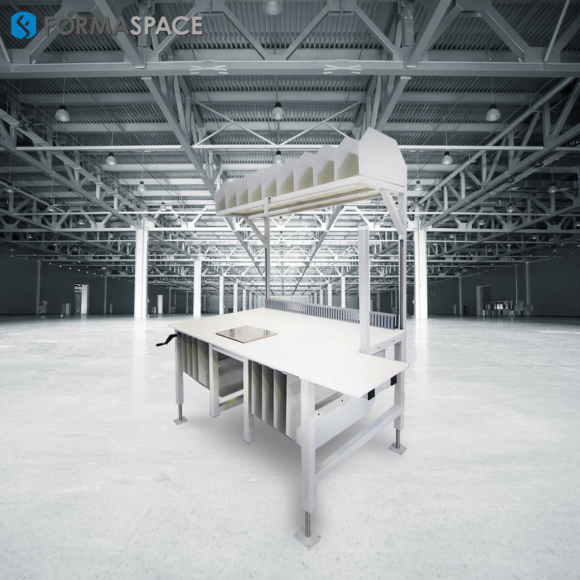During the Covid pandemic, commodity prices went crazy and lead times skyrocketed. Are things getting better? We take a look at the state of supply chain logistics in this Formaspace research article.
High Inflation, High Dollar, but a Lower US Trade Deficit
· Mixed Signals – Energy costs are driving prices up while a high US dollar is driving import prices down
Everyone, including the Federal Reserve, is trying to figure out today’s economy.
The war in Ukraine is clouding the economic forecaster’s crystal ball. Fighting is not only taking place on the battlefield but also in the world’s energy markets, with sanctions and counter-sanctions driving up the price of energy (especially in Europe).
Earlier in the summer, $5 gas and 9% inflation led the Fed to raise interest rates. So far, employment remains high, but 5% mortgage rates quickly cooled the red-hot housing market, decreasing demand for home goods.
Recently, US oil dropped to under $90/bbl, and gas fell to $3.75. However, Europe is seeing record natural gas prices, and the risk of a European recession is seen in the exchange rates. In a first, the dollar reached parity with the Euro, and the UK Pound is at a 35-year low.
The high dollar helped reduce our trade deficit by 12.6% in July, and it’s helping to blunt the inflation rate, which could hopefully help us stave off a recession here at home.
China’s Manufacturing and Economic Outlook
· After Covid lockdowns, China’s export economy is slowing with unpredictable factory shutdowns
Unlike the West, China has a zero-tolerance policy against Covid. For manufacturing companies, a Covid outbreak can lead to immediate lockdowns, as Tesla experienced recently at its Shanghai factory. Factory production across China has also been interrupted by power shortages caused by extreme heat, droughts, and floods.
The economy is also slowing due to rising inflation and fears over a property market bubble. While exports are still rising (7.1% year on year), that figure is down from July’s 18% year-over-year gains. Significantly, Chinese consumers are cutting back on e-commerce purchases after years of rocketing growth. The Yuan currency fell to a two-year low against the US dollar, causing China’s central bank to prop it.
The bottom line for purchasing agents and supply chain professionals? The pipeline for Chinese-sourced products and materials is recovering from the worst of Covid pandemic shortages but could still be hit with unexpected delays, depending on the sector.

Changing Consumer Demand Post-Covid
· Inflation is dragging down consumer spending as post-Covid demand shifts away from home-oriented products, helping to ease lead times.
Demand for products and services that boomed during Covid reverting to the pre-pandemic norms. Retail giant Best Buy sees supply chains stabilizing, with product lead times for electronics and home appliances easing.
However, all is not rosy for retailers. A slowing housing market and rising inflation have led to a downturn in consumer spending for “nesting” purchases (such as home furnishings and casual apparel) that has caught retailers such as Target off guard.

Warehousing/Distribution Center Logistics Remain Tight
· Warehousing and logistics bottlenecks are on the rise as retailers absorb large inventories
Spooked by earlier shortages, many retail companies ordered back-to-school and holiday goods early this year, taking advantage of pre-peak season cargo rates that were down as much as 60%.
The question is, what to do with all that inventory?
Some retailers, like Target, realized their purchases were no longer in sync with post-Covid consumer tastes and took a hit on profits by liquidating excess inventory.
Others are scrambling to find enough warehouse space to store everything, even resorting to stowing excess inventory in truck trailers and containers.
Meanwhile, logistics giants, such as Amazon, are trying to decide whether to proceed with their aggressive warehousing expansion plans or just wait it out.

Overseas Shipping Congestion Shifts Eastward
· Backups now threaten Eastern and Gulf Coast ports; Railroads take a deep breath to reorganize operations
Many shippers were trying to get their containers through LA ports during the first half of the year before a threatened strike action by port workers. This helped create monumental backups.
With a West Coast strike expected, shippers are sending large container ships through the widened Panama Canal, creating new backups in Houston and Savannah.
Railroads delays are improving slightly as railroad operators unwind “efficiency” measures (that prioritize equipment and manpower utilization over timeliness) by reinstituting “hump” yards that break trains apart to redirect shipments quicker.
Finally, the crunch times for trucking may be easing as consumers shift consumption from products to services. Freight shipments fell 1.7% from June to July, indicating a reduced demand. This should make booking freight shipments easier, but the high cost of diesel fuel continues to put pressure on trucking operational costs.
The Crippling Shortage of Chips and Electronics is Easing
· Auto production recovers as chip shortage eases for some makers; electronics industry sees lower demand due to tech sales bans to China and Russia
The chip shortage, which bedeviled vehicle manufacturing in 2021 and into 2022 (with Toyota and Honda being the most recent examples) appears to be easing. US inventories of light vehicles rose 10% in July, signaling improved production.
Overall demand for silicon chips has begun to drop, and Samsung predicts this sales slump will continue into 2023. Nvidia warns that it will see a sharp downturn in sales if it is prohibited from selling to Chinese and Russian customers per new US trade sanctions.
The collapse in Bitcoin prices has weakened demand for advanced GPUs, so consumer gamers are able to buy products once again as prices ease.

Prices for Lumber Slide but some Construction Materials Still Expensive
· After a sharp increase in prices and limited availability, the market for lumber has recovered, but not all construction materials have returned to normal.
Lumber prices shocked the construction industry in 2021, rising as much as 142% to a new high of $1,700 per thousand board feet.
Thanks to a cooling housing market and rebuilt supply-chain pipeline, prices are down from January’s high of over $1,300 to $500 per thousand board feet – well within the $200 to $600 pre-Covid price range.
While some construction material prices are easing (copper pipe is down nearly 13%), many products remain pricy, such as asphalt roof shingles (whose price is tied to oil) and gypsum board. Long lead times persist for rebar, insulation, windows, doors, and siding.

Production of Steel, Specialty Metals, and Chemicals at Risk in Europe
· European production may be curtailed due to shortages of natural gas.
From the looks of it, there will be severe shortages of natural gas throughout Europe heading into the winter of 2022/2023.
Energy-intensive heavy industries face the prospect of curtailing production in favor of residential heating or astronomical prices that will make production uneconomic.
Either way, steel prices (which are down 20% from the pandemic peak) could begin to creep back up if European production is curtailed for an extended time.
The same production cutback scenario applies to the European chemical industry as well; these companies not only use natural gas for power and steam generation, they also rely on natural gas as a feedstock (raw material) in chemical production.
One company at risk is the German chemical giant BASF, which produces a huge range of specialty products, including plastics, paints, coatings, lubricants, and chemicals (such as ammonia). If it is unable to produce these products, there may cause production problems for other companies in the supply chain that rely on raw materials from BASF.
Formaspace is Your Partner for Efficient Logistics Operations
If you can imagine it, we can build it, here at our Factory Headquarters in Austin, Texas.
Take the next step and contact your Formaspace Design Consultant today to find out how we can help you make your next project a success.









